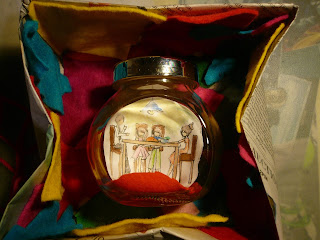Four Walls, One Gone
I sat back in a daze when our lecturer for art history explained to the crowd of half awake students that women were subjects of the gaze, the muses and the inspiration for a lot of the artists and architects that are well known today. To simply put, we were the embodiment of a walking entertainment.
It’s quite frustrating really, to be stereotyped and pigeonholed into certain ideals and images. For me, I become quite agitated the comments my parents make about my lack of graciousness and tomboy attitude towards life. However, because it is hard to see through people’s opinions and the way they view the everyday spectacle, we are prone to project expectations upon others without getting to know them. I am quite guilty of stereotyping others. I do it, you do it, and let’s face it, we all do it.
And whether we are aware of it or not, it applies to architecture as well.
As a child I would always play with a Barbie, Ken and Kelly. Each of them would have certain roles in designated parts of a makeshift cardboard house or furniture. For those who once played with a dollhouse or house has always given certain roles that are cemented to certain genders. We’ve got the kitchen for the girls to cook, the study for the father to work and the dining table where it is one big happy family for everyone to eat and share a meal. This type of play can be somewhat applied to architecture as well, for we have a kitchen, bedroom, living and dining room that is cemented with a stereotyped purpose. Considering that we all grew up uniformly understanding the meaning and the actions that are prescribed to these spaces we then automatically assume that it is the correct order of how a space should function. It can sound quite dictating really however, it is interesting to see that because we were brought up to understand that these are the basic necessities or what deems to be the most important need for each person that we just simply assume that those are what we need. Though I was innocent to idealise that gender defined certain roles, looking back at it now makes me sad that complex topic issues have now make the innocence of a child simply playing with dolls have been lost. This is simply because while we apply a word within a space, it potentially determines the type of program that would take place within, and possibly stereotype the gender biased roles within the programs as well.
So what if we swapped certain roles or even certain terms and definition? What if the kitchen was not defined with a stove, cooking utensils or food? What if the kitchen was programmed with activities that resembled the living room? Would our views on certain roles be switched? Let alone, would removing how we label certain objects change our knowledge on our everyday routine? That would be very similar to walking about of Plato’s allegorical cave - where we as a society have been chained to watch a theatre of moving images, only to realise that they were illusions projected once we were free to break away from them. I can only be certain, if we have to relearn everything, and therefore we could become quite delusional. I can only say this with a degree of confidence considering that we are still living in a society where change is not an easy course, rather it would take many years in order to see a revelation in something.
Having said, this does not mean that we should completely change how we define our words. Instead challenge others in how they perceive certain everyday objects. Write down your routine and then switch the words. Start a conversation by challenging others to see whether you can substitute words for another. Perhaps then we would be able to start to see a subject in a fluid form.
Then perhaps, perhaps our habit of stereotyping would become less and less.
A Response to:







Comments
Post a Comment